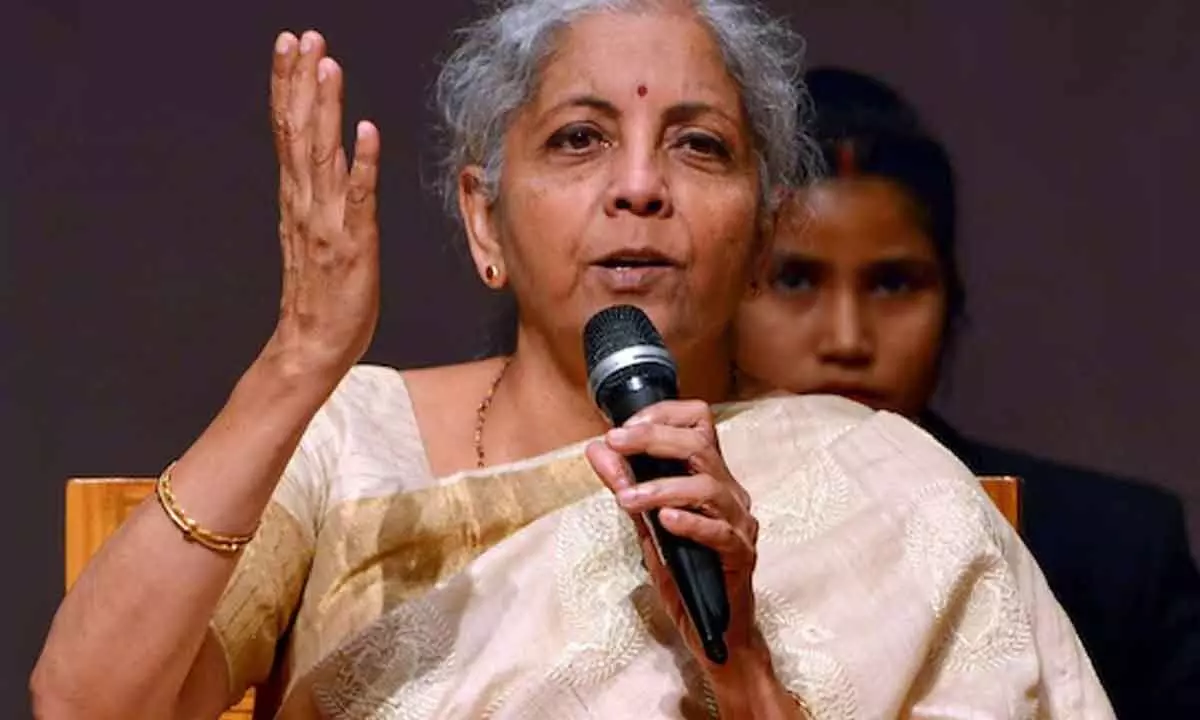BJP’s fiscal management much better than UPA’s: FM
Says during the UPA rule, central govt debt grew about 3.2x from Rs18.74 lakh cr and it’s 2.9x from Rs58.59 lakh cr to Rs172.37 lakh cr in FY24 during NDA rule
image for illustrative purpose

I wonder how many welfare schemes would Rahul Gandhi shut down to accommodate the fiscal cost of the ‘khata khat’ schemes. Where will funds come from - Nirmala Sitharaman
New Delhi: BJP leader and Finance Minister Nirmala Sitharaman on Monday The truth is that the BJP government’s fiscal management is much better than that of the UPA, despite facing Covid-19 pandemic in which substantial resources were used for relief efforts. The FM wondered whether the Congress is aware of the cost of implementing the social welfare schemes, including giving Rs1 lakh to women belonging to below poverty line families.
During the UPA rule from FY04 to FY14, she said, central government debt, including external debt at current values, grew about 3.2 times, from Rs18.74 lakh crore in March 2004 to Rs58.59 lakh crore in March 2014. This increase was much greater than the 2.9 times growth from Rs 58.59 lakh crore in FY14 to Rs172.37 lakh crore in FY24 (RE), she said, adding, this lower increase between FY14 and FY24 occurred despite the impact of the Covid-19 pandemic, where the Centre borrowed to provide relief to those in need even as revenues fell.
The central government’s debt, which was 52.2 per cent of the GDP at the end of 2013-14, was reduced to around 48.9 per cent in 2018-19 through gradual fiscal consolidation. During this period, the fiscal deficit was lowered from 4.5 per cent in FY14 to 3.4 per cent in FY19. However, due to the Covid-19 pandemic and proactive government measures to protect lives and livelihoods, the fiscal deficit surged to 9.2 per cent of the GDP in 2020-21, increasing the central government’s debt to 61.4 per cent of the GDP. Post-pandemic, Modi-led government pursued a balanced approach to fiscal consolidation while sustaining economic growth.
This strategy reduced the fiscal deficit from 9.2 per cent of GDP in 2020-21 to 5.8 per cent in the Revised Estimates for FY24. The Interim Budget projects a further reduction to 5.1 per cent of GDP in FY25. Similarly, the central government’s debt-to-GDP ratio fell from 61.4 per cent in 2020-21 to 57.1 per cent in 2023-24. The Net Market Borrowings (G-sec) of the Centre had gone up a whopping 4.5 times during the UPA regime, she said, adding, “it went up 2.6 times under our government despite the Covid-19 pandemic”. “It shows the robust fiscal management of our government,” she added. A lot has been said in recent times about the fiscal management (especially on debt) of our government under PM Modi’s leadership, Sitharaman said in a post on X.
“Many times, absolute numbers have been compared without considering the GDP growth on which we base the debt calculation. I would like to put out a clear picture, unlike @INCIndia, which hides behind lofty promises that are non-transparent and disconnected from reality,” it said. “Has @INCIndia considered the cost of the lofty promises made in their manifesto? Have they calculated how much the ‘Khata Khat’ schemes will cost fiscally? Will they borrow substantially for them, or will they raise taxes to fund them?” it said.
She wondered how many welfare schemes would Rahul Gandhi shut down to accommodate the fiscal cost of the ‘khata khat’ schemes.

